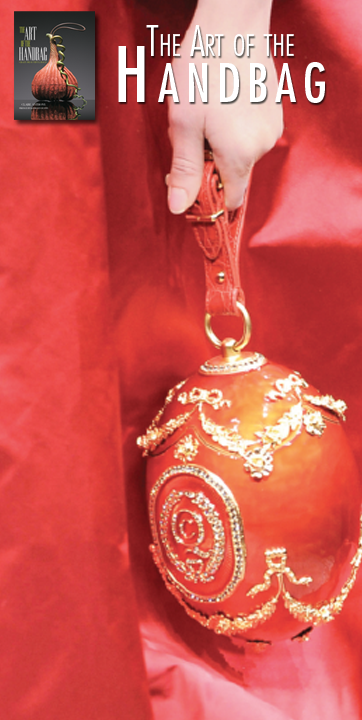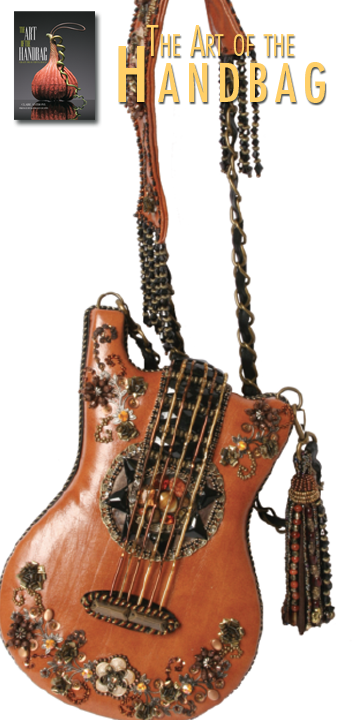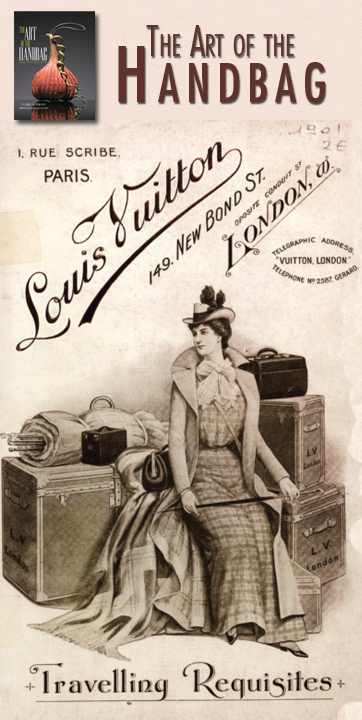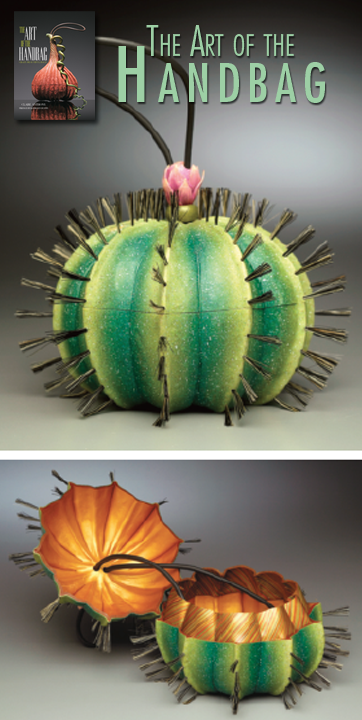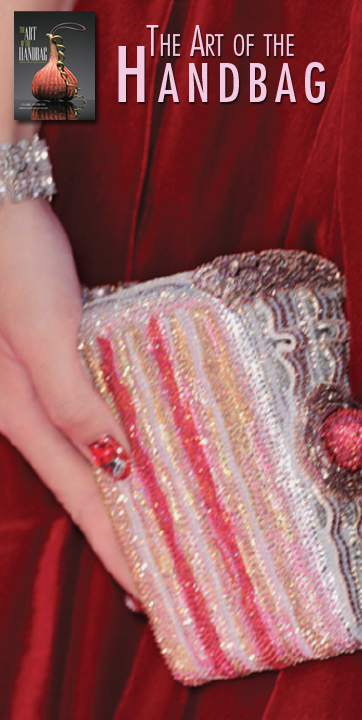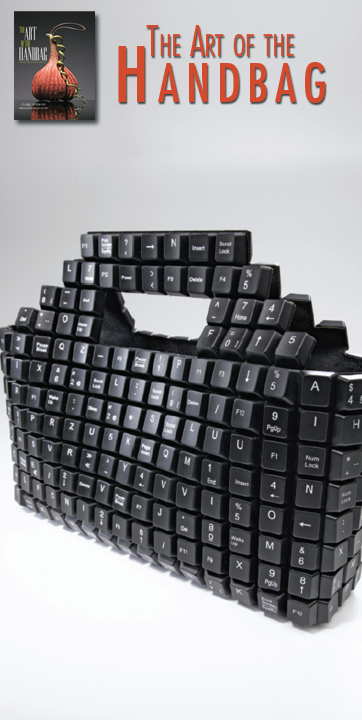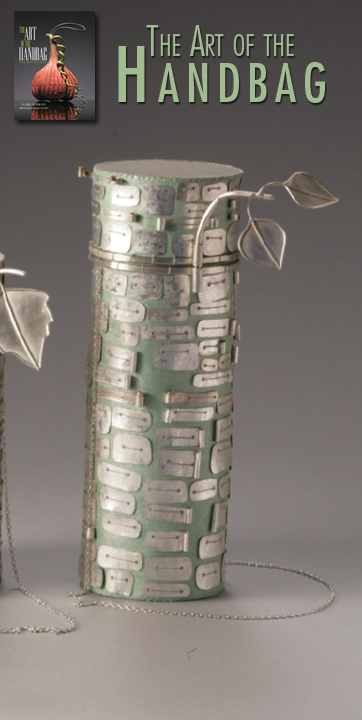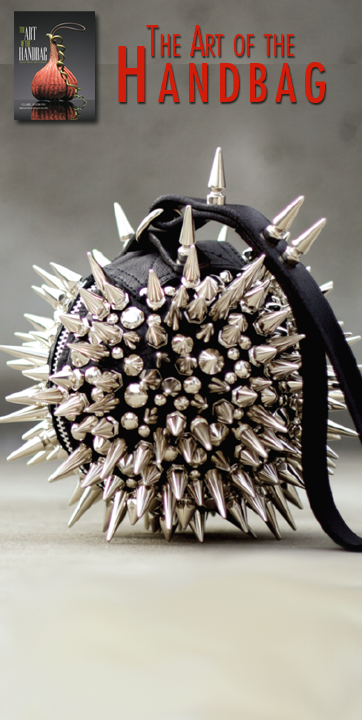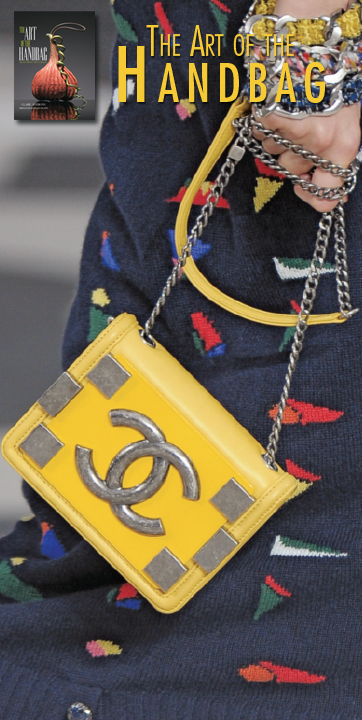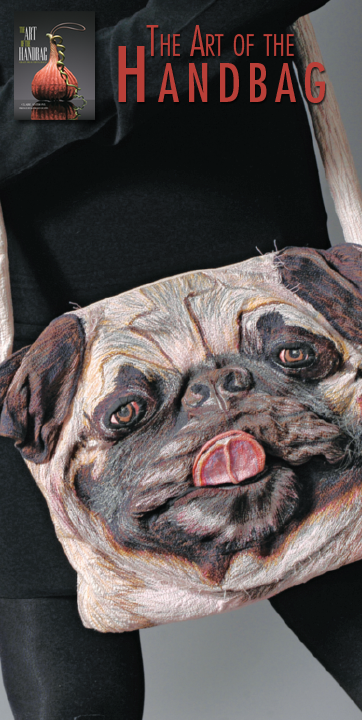
From The Art of the Handbag:
Priscilla Snyder was still in her teens when she began “painting with thread,” a technique that involves intensive textural embroidery and appliqué that is often mistaken for paint. She began by stitching studies of her hands and feet and was soon embroidering portraits of people and animals. When she joined her sister in puppet making, Snyder continued to use the same stitching techniques.
